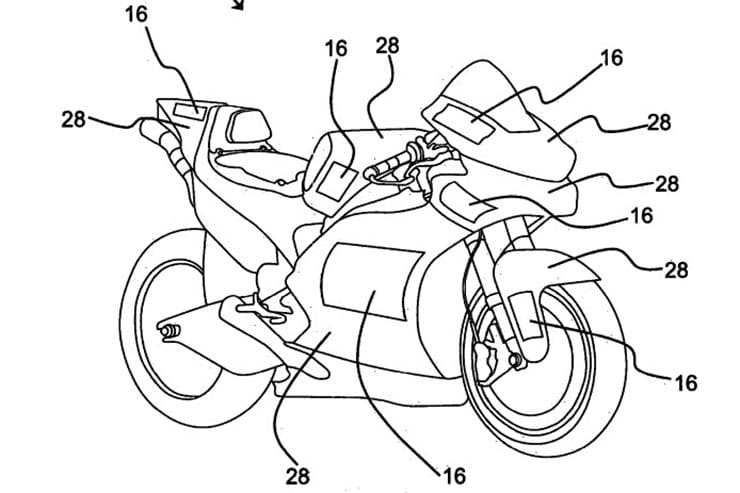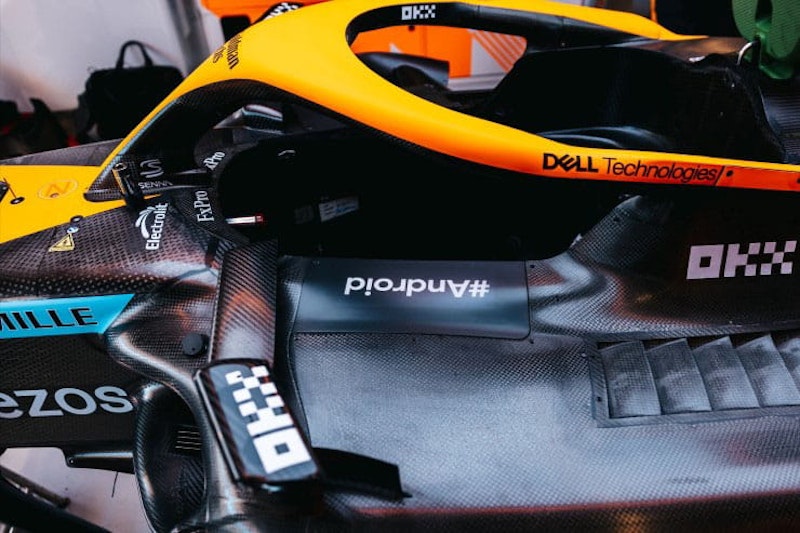Moving graphics on bikes and leathers
By Ben Purvis
Motorcycle Journalist
06.12.2022
If you were paying attention to the minutiae of the 2022 F1 season you might have noticed that at on the Friday practice session of the US Grand Prix in October the McLaren team introduced a new technology in the form of digital display screens strategically placed on its cars – allowing adverts to be changed even as they drove around the track. This toe-in-the-water exercise could well foretell the future for advertising in motorsport and the inventors of the tech have already got their eyes firmly on motorcycle racing.
It's not just the bikes that are likely to end up covered in display screens, either, as the British company behind the idea is also working on ways to incorporate it into riders’ leathers as well.
Seamless Digital, the company behind the display screens used on the McLaren cars at the US GP in Austin, Texas, and during Friday practice sessions for the rest of the 2022 season, is part of Silverstone Paint Technology, itself related to another company – Silverstone Design Limited – which has filed the patent application seen here. It illustrates the sort of flexible display screen that appeared on the McLaren F1 cars in 2022, but applies them to bikes and leathers, specifically mentioning the possibilities offered in MotoGP and superbike racing.
The point is, of course, to be able to change advertising displays on the move during a race, rather like the changing ads that are commonly seen on bus stops and buildings.
To shift the idea to a moving vehicle, and particularly one at the very apex of motorsport where carbon fibre is the usual bodywork material and every gram matters, is an impressive achievement already, and one that illustrates the attraction of being able to change ads automatically or at the touch of a button.
The displays used so far have been battery-operated, so they’re isolated from the vehicle’s electrical system, and McLaren started testing them at the end of 2021 – initially hiding them under vinyl to avoid attention – before the official debut in October 2022. The system on the McLaren, with one screen on either side of the cockpit where they’re in view of on-board cameras, weighs just 190g in total, and thanks to low power consumption – the system is similar to the e-ink screens used on e-book readers – can operate on a very small battery. You can see them in action below:
Seamless Digital and McLaren Racing bring pioneering digital advertising to Formula 1 cars.
Footage captured during testing in Barcelona earlier this year, showcases the cutting-edge technology that will debut exclusively on the MCL36 during the US Grand Prix in Austin. The innovate technology allows partner branding to change during a race weekend and features on the edge of the driver cockpit.
On racing motorcycles, where large, flat spaces for advertising are already at a premium, the technology could be even more valuable. The Silverstone firm has already recognised that bikes have substantially curved fairings and according to its patent its flexible display panels can conform to those curves. Even more impressively, it intends to be able to apply the same technology to leathers, using the flexible screens in pocket-like sections, retaining leather behind them to ensure abrasion resistance. The screens sit behind flexible, clear plastic panels (indicated as ‘42’ in the images) sewn onto the surface of the leather. The patent shows small display panels on the rider’s upper arms, with larger ones on the chest and thighs and the biggest one of all on the lower back – directly in view of the tail-mounted on-board cameras. Another display panel is suggested on the aero hump behind the rider’s helmet, where less flexibility would be required.
On the bike itself, panels (marked ‘16’ in the drawings) are envisaged on the side panels, either side of the screen, on the front mudguard and on the sides of the tail.
Although advertising is clearly the main focus of the system and provides the obvious route for the idea to prove profitable to both teams using it and the company making it, the idea of displays on race bikes could also be employed for other purposes, for instance showing the rider’s current position in the race to help make the order clearer to spectators. It also opens the door to possibilities like indicating the race status – for instance, showing if there’s a red or yellow flag – in a way that might be more instantly clear to riders.
It's still early days, but if McLaren’s initial test of the system in 2022 turns into a more permanent adoption in 2023, then we shouldn’t be surprised if bike racing teams start hammering on Seamless Digital’s door soon afterwards.
Share on social media:

